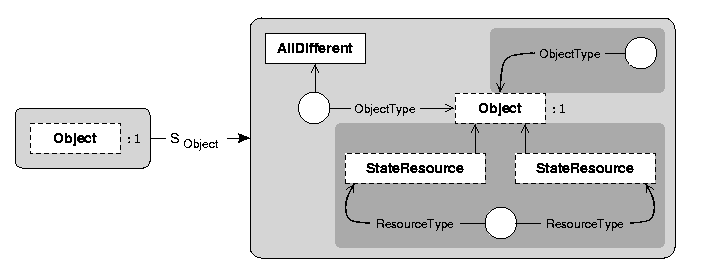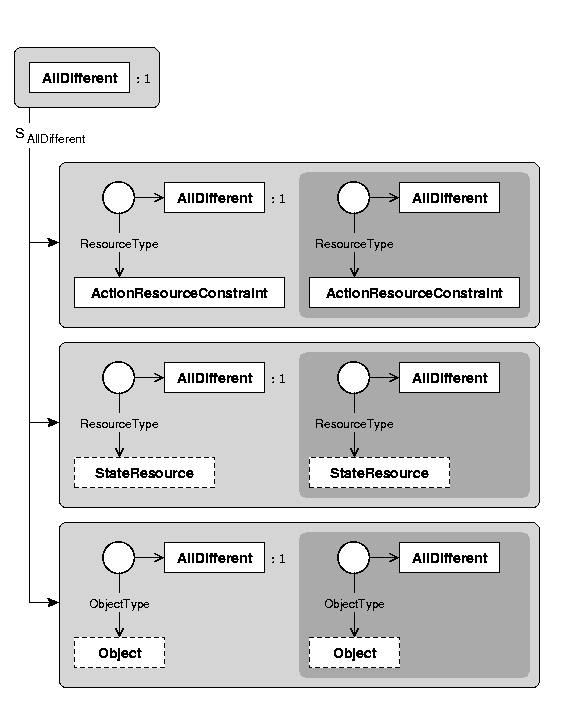
The Extensible Object Constraint Object
| EXCALIBUR Adaptive Constraint-Based Agents in Artificial Environments |
| [PLANNING AS SCSP] | [Time] [Actions] [Operations] [States] [Objects] [References] [Sensors] [Existence] [Correctness] [Formulation] |
| [ Please note: The project has been discontinued as of May 31, 2005 and is superseded by the projects of the ii Labs. There won't be further updates to these pages. ] |
(Related publications: [PUBLink] [PUBLink])
The Object aggregation is shown in the figure below. The role of the ExistenceProjection variable and the Existence Constraint are explained in Section [Existence Projections].

The Extensible Object Constraint Object
The ObjectType variable specifies the type of the Object - for example, a Door. The ObjectType variable is not directly included in the pbase graph, as this allows the search (using the production generation of Chapter [Structural Constraint Satisfaction]) to exchange an Object's ObjectType for a similar one without deleting the whole Object, e.g., if the search decides to consider an Apple instead of a Pear. However, this necessitates the structural constraint of the figure below, which ensures that an Object has exactly one ObjectType variable. In addition - as with the SRC - all ObjectType variables are connected to an All Different constraint.

The Structural Constraint Object
Instead of a general unique identifier, the ResourceType of a State Resource has the task of specifying the State Resource's role within the Object, e.g., a Door's Location, Lock or Color. To prevent ambiguities, all ResourceType variables of an Object's State Resource must be different (see figure above).
For an All Different constraint, an additional structural constraint is needed that enforces that the All Different constraint must either be connected to an ARC's or State Resource's ResourceType variable or an Object's ObjectType variable, and that there must be no other All Different constraint for the same kind of type variables (see figure below).

The Structural Constraint All Different
Any State Resource must be linked to an Object (see the structural constraint State Resource). Agent-internal State Resources, e.g., the agent's Hunger, can be linked to a unique Ego Object.
A Task Constraint (or SRC in the case of dependency effects) must also ensure that the connection of ResourceTypes and ObjectTypes with the Task Constraint's (SRC's) State Tasks and Precondition Tasks is correct with respect to the Task Constraint's ActionType (ResourceType of the SRC's State Resource). For example, an action Eat Peanut X should link its State Task with a Vanish contribution to the same Object that its Precondition Task with the location test is linked to.
| [PLANNING AS SCSP] | [Time] [Actions] [Operations] [States] [Objects] [References] [Sensors] [Existence] [Correctness] [Formulation] |
For questions, comments or suggestions, please contact us.
Last update:
May 20, 2001 by Alexander Nareyek